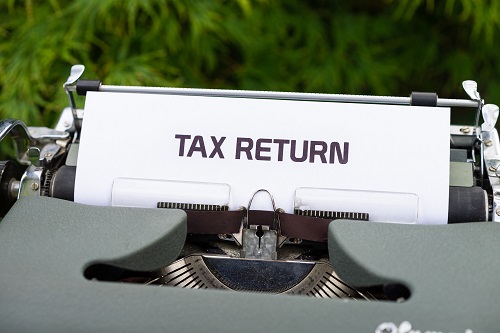How To Prepare For The Income Tax Season
By Pamela Wong
Pamela is a Trained Professional Organizer based in Oakville, Ontario and is the owner of Zen N Organized. She helps homeowners and small business owners transform their homes and home offices into organized spaces. She has a practical, non-judgemental approach to organizing. Her objective is to create functional and harmonious spaces for her clients.

Are you dreading the upcoming income tax season? Unless you are an accountant or a tax auditor, your answer is probably yes. Organizing tax receipts and documents can be overwhelming, and if you are self-employed, then add your business-related expenses to the already stressful task.
The never-ending incoming paper often causes one’s anxiety level to go up. Sorting tax-related documents may not be the first thing on your to-do list, but if you have strategies in place, then tax season can be a lot easier than you think.
Read about paper decluttering tips here .
To make this process more manageable, set up a structure that works for you and organize the documents as they come in. Let me use one of my clients as an example.
Types Of Documents
I will call my client Tammy (not her real name). She and her husband are self-employed professionals and have 2 young adult children. In addition to their professional lives, they also have a substantial investment portfolio, including a few investment properties.
You can imagine the various types of incoming documents that Tammy receives over the course of a tax year, e.g. all the T-slips, incomes from all sources, deductible business expenses, personal and property taxes paid, medical expenses, charitable donations, mortgage interest statements etc.
Organizing Structure – Make It Work For You, Not The Other Way Around
I have worked with many clients throughout my organizing profession, and so many of them struggle with their filing. Your best friend may file her papers in a completely different way than you, and that’s OK. No two people will file the exact same way.
The idea is that the filing structure should make sense to you, and most importantly, it should make your life during tax season easier!
In Tammy’s case, her tax documents are grouped in the following categories:
- A copy of previous year’s Notice of Assessment
- Incomes
- T-slips and investment receipts from employment and investments
- For the investment properties – rents collected
- Expenses – employment and business
- For the investment properties – maintenance and repair receipts, mortgage interest statements, property taxes paid, condo fees, property management fees
- For self-employment/business – business tax / license fees, continuing education or conference expenses, advertising, meals and entertainment expenses, management and administrative fees, office supplies expenses, travel expenses, marketing expenses, insurance, utilities, car, home expenses for business use
- Medical expenses
- Charitable donations
- Other tax-deductible receipts
Obviously, these are Tammy’s categories, so you may have slightly different (or additional) categories than hers.
How To Organize The Information
Here’s a simple list of how to organize the papers. Tammy’s filing structure is very similar to this:
- On a cloud drive or a detachable drive (USB, hard drive etc.), create the filing structure that works for you
- It is important to name the folders according to you, based on your naming convention If you prefer to use “fuel” instead of “gas”, then go for it. Remember, the key is that the structure needs to work for you, not the other way around
- Save all relevant files in the appropriate folders or subfolders
- TIP: Remember, for tax purposes, you want the receipts sorted by month, not by the name of the company
Learn more about ways to organize your computer files.
- Use a mile tracker app to log mileage. If you prefer to do it yourself, then keep a spreadsheet with the necessary information (date, time, description, starting mileage, ending mileage and total mileage), can be just as effective.
- Double check to make sure you have all the information. Deal with any missing information while things are fresh on your mind
- Finally, share your cloud/USB drive that has all the folders and relevant information with your accountant to reduce paper clutter
Last Tips
- It is never too late to start. You will be amazed how much time you will find once you have things set in place
- Stay on top of it. Whether it is once a week or once a month, you need to be hands-on
- Get help, especially when you are overwhelmed
Setting up a structure for your tax documents will help alleviate some of the stress and anxiety. Your accountant will be thankful, and you will have more time to do other things you’d rather be doing!
If you are looking for someone to set up a systematic way to file your papers and documents, you can reach me at pam@zennorganized.com.





